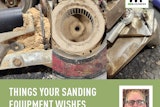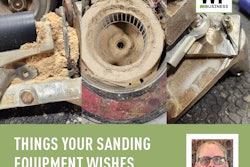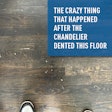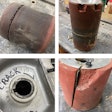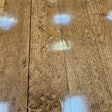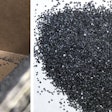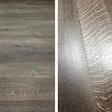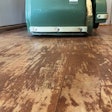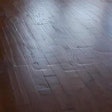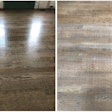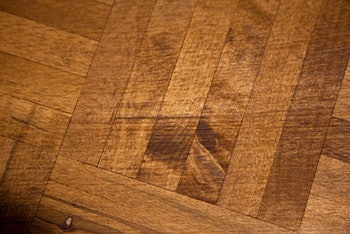
• The most common reason that a sander will side-cut is the sander is not set up to cut flat. This leaves lines on the floor on one side of the cut path. It's a good idea to take some time to level the machine at the start of your job.
• Too much drum pressure for the species of wood being sanded can also cause this problem. The softer the wood (pine, fir, cedar) that is being sanded, the less pressure you need from the drum on the wood. It does still happen with hardwoods (oak, maple, pecan, etc.), but checking the pressure of the drum, and adjusting that pressure, should eliminate this cause of vertical sanding lines on the floor.
• Speed of sanding can be a major factor in the performance of your machine. Moving too slowly while sanding will leave lines on both sides of the sanding path. Adjustments to your sanding speed should be made accordingly.
• Sometimes a new drum's edges are not beveled. Beveling the edges is a simple cure. Taking a little sandpaper and rounding off the edges will be a quick fix-most of the time.
RELATED: Power Up: How to Safely Power a Wood Flooring Job Site
• On some occasions, the rubber delaminates on the edge of the drum, and centrifugal force causes the rubber to "grow" (moving away from the center of the drum), causing vertical lines on the floor. If this is the case, the drum will need to be replaced.
• If nails or staples have been sanded over, this dulls and/or removes the mineral on the sandpaper, which can leave a line of "less sanded" streaks in the cut path. If the fastener has cut through the abrasive and gouged the drum, the drum will need to be replaced, because the abrasive won't be supported where there is missing rubber.
• If the paper tracking is not consistent, then the paper might be moving back and forth on the top roller. This also leaves vertical lines. Adjusting paper tracking, centering the sandpaper on the drum and checking the quality of the sandpaper are a few of the troubleshooting steps you can take. If this doesn't work, sometimes the top roller needs to be repaired.
• Wheel problems may be the cause of vertical lines. Drum sanders with steel wheels can cause vertical lines when the wheels are worn. Sometimes the steel wheels on the sander become so worn that there is no crown left. This will leave edge marks, especially on those softer species of wood. Bent truck brackets, where the machine is cutting flat but where one wheel is at a severe angle, will leave lines. Checking to make sure the wheels are in tip-top shape will help. The wheels may need to be replaced.
• Debris on the top roller and drum (filler, adhesive, etc.) will cause the sandpaper to bulge, leaving the vertical lines on the floor. Keeping your machine "clean" will solve this.
• When sanding the floor, if the operator does not follow the same path on the forward and back passes, doesn't use the proper overlap on the cut pattern, or pushes on the feathering handle (too much pressure), there can be lines left on the floor. Sometimes doing these things will leave broken or skipped lines (like this: __ _ __).
So, by performing a few simple maintenance tasks, doing some troubleshooting, and making the necessary repairs to your belt and drum sander, those vertical lines should be a problem of the past.









